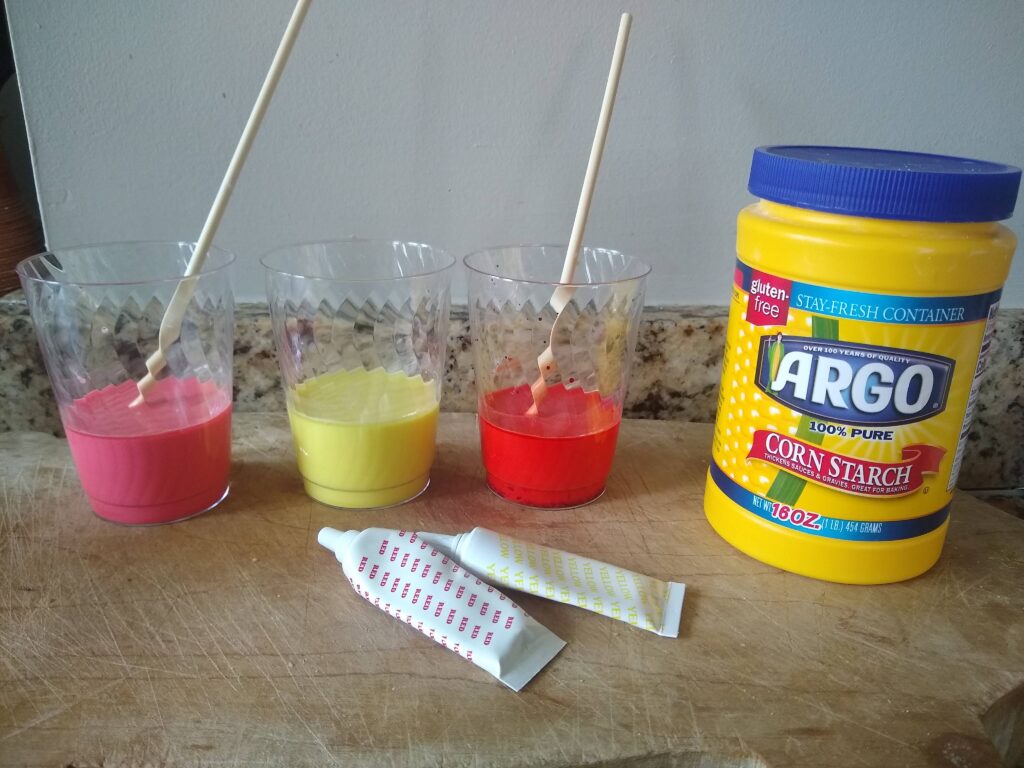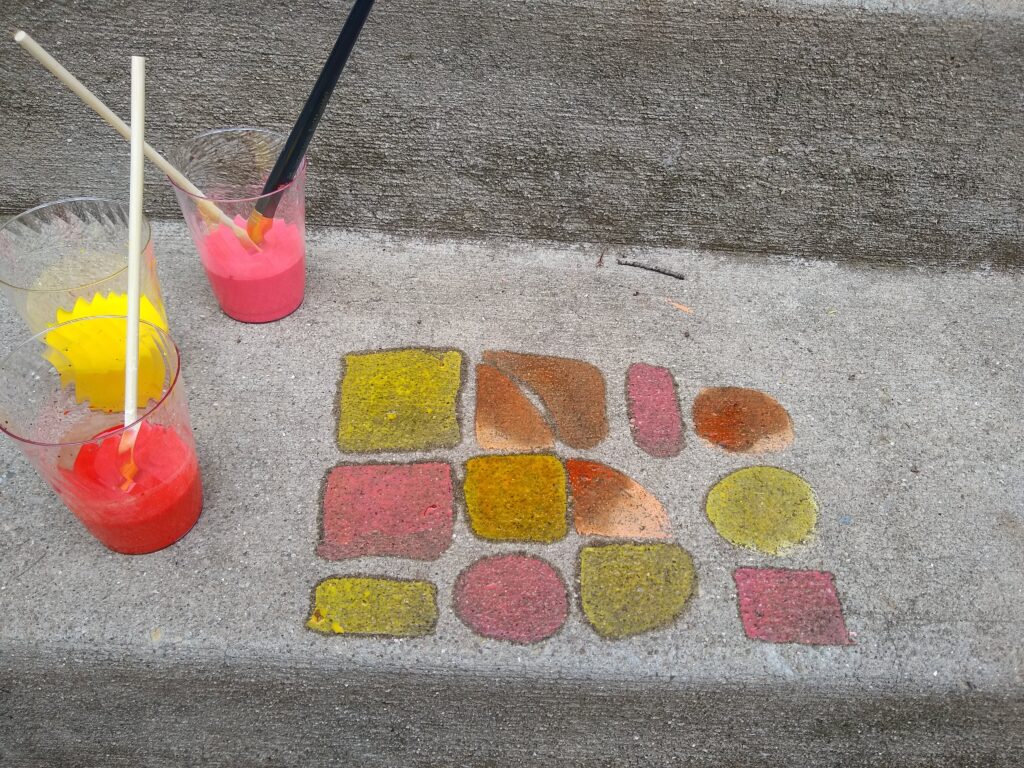Columbus Museum of Art is excited to partner on COSI’s second annual Science Festival, which has moved virtually for health and public safety concerns.
These creative prompts are going to be a bit more challenging than our weekly Studio themes and may require securing materials ahead of time. With some planning and prepping you can play along at home when you have an afternoon or day to engage with the whole family.
#COSISciFest
DIY Chalk Paint:
Supplies:
Cups or bowls
Measuring cups
Spoons or a stir stick
Corn Starch
Food coloring
Water
Paint brush or use those digits for finger painting
Containers with lids if you wish to save paint for a later use

The Recipe:
1 cup of Corn Starch
1 cup of water
Mix together until smooth
Divide the mixture into additional bowls in equal parts.
Add food coloring into each new batch according to the color saturation you desire Play with mixing primary colors (red, blue and yellow) together to make new colors.

The Making
Find a sidewalk and start decorating.
For an extra challenge bring out tape to create a grid pattern and color in the open space. Remove the tape to show a finished design.

Paint Pendulum
Supplies:
DIY Chalk Recipe or water down acrylic/tempera paint
Paper Cup or a bowl or a plastic cup that is easy to pierce
Yarn, twine or a piece of rope
Tape
Hole punch or a sharp pencil to create holes in your cup.
2 chairs with an open back or create a tripod out of branches
A broom or long stick
Plastic tarp or trash bag (if you working inside)
A canvas to paint on the sidewalk works or a sheet of paper

How to build the Pendulum
Step 1:
Pierce two holes in your cup near the top using your hole punch or pencil. Use caution if using a sharp edge of a pencil. Place one hole in the bottom of the cup in the middle. Cover the hole in the bottom of the cup with a piece of tape.

Step 2:
If you are working inside, place down a tarp or floor covering first.
Set your chairs up so the backs of chairs are facing each other. If you were seated imagine that you are sitting back to back against a friend so the backs of your heads were touching. Place the chairs 3-4 feet apart . Place the broom or branch so that it’s resting on the seats or the backs of the chair.

Step 3:
Measure the distance of the top of the broom to the floor and double that measurement. So if it’s 10 inches measure your rope to 20 inches. Cut rope or twine to that length.
Place the string through one of the holes you made into the side of the rope. Then while working inside the cup place it through the internal side of the cup.
You should now have two long strands of rope coming out the sides of your cup.
Secure the remaining string to the top of the broom, this is called the Frictionless Pivot.
Allow the cup to hang free of movement, this is called the Equilibrium Position.
Pull the string gently so that it can start and watch the movement of the cup. Can you adjust the rope length by shorting the cup? How does this affect the movement of the pendulum?
Your cup should now swing (oscillate) back and forth like a pendulum. Swing the cup around and watch how it swings. This is the act of converting energy back and forth or periodic motion.

Step 4:
Now that you’ve studied the movement of a pendulum it’s time to get messy!
Again, make sure you have a tarp or garbage bags placed down under your pendulum to help keep your workspace clean. Place down your paper directly underneath the cup or use the sidewalk as your canvas. Add your DIY chalk paint or paint of choice into the cup. Making certain that it’s been watered down. Gently pull back the string while being ready to remove the tape you placed on the bottom of the cup. Allow the rope to swing freely and watch the color patterns of the paint as the pendulum swings. Continue to add more paint colors and swing the pendulum in different directions.
Share your COSI creations with us at #myCMAstudio and #COSISciFest.
-Megan Green brings more than a decade of creative entrepreneurship into her role at CMA as the Manager of Studio of Initiatives. She’s shared her passion for supporting artists through her direction at Craftin’ Outlaws and Midwest Craft Con.
Open Studio is a drop- in program hosted on Saturdays and part of CMA’s JPMorgan Chase Center for Creativity Studio to explore ideas, solve creative challenges, and collaborate with friends and family. We look forward to inviting you back to Open Studio and other CMA experiences when we reopen to the public.
